An Introduction to
Japanese Mushroom CultivationThe art and science of proven
mushroom production methodsThere is a lot of unnecessary mystery and confusion about Japanese mushroom cultivation systems. Few Westerners have accurately or extensively studied Japanese mushroom cultivation, and even fewer Japanese farmers and industry figures have promoted the industry internationally.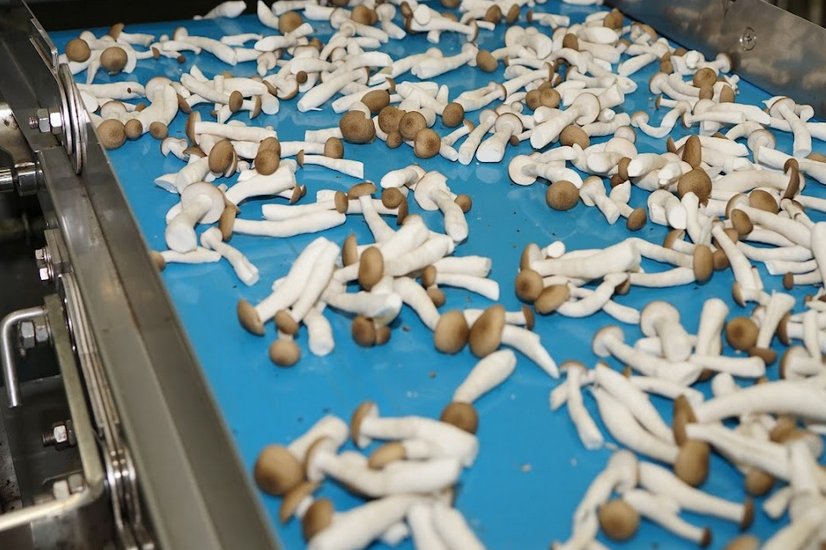 Japan has conducted decades of innovative mushroom farming research and established proven mushroom production methods and fungi farming techniques, which remain untranslated and obscure. On the other side of the globe, numerous universities and research teams in Europe and the US are separately studying the same thing.Mushroom farming is an essential economic multiplier for the Japanese countryside, supporting not just the farms themselves and the food security that the 460,000 metric tons of production annually ensures, but also the truckers, equipment manufacturers, and material suppliers (of substrate, bags, or bottles). Japan is a tough market for farmers too, as consumers are very demanding in terms of freshness and also know how to judge a mushroom’s quality. The flip side is that mushroom prices are meager, with even shiitake selling at a fraction of how much the domestically grown European and American shiitake sell for.
Japan has conducted decades of innovative mushroom farming research and established proven mushroom production methods and fungi farming techniques, which remain untranslated and obscure. On the other side of the globe, numerous universities and research teams in Europe and the US are separately studying the same thing.Mushroom farming is an essential economic multiplier for the Japanese countryside, supporting not just the farms themselves and the food security that the 460,000 metric tons of production annually ensures, but also the truckers, equipment manufacturers, and material suppliers (of substrate, bags, or bottles). Japan is a tough market for farmers too, as consumers are very demanding in terms of freshness and also know how to judge a mushroom’s quality. The flip side is that mushroom prices are meager, with even shiitake selling at a fraction of how much the domestically grown European and American shiitake sell for.- The unique aspect of Japanese mushroom cultivation lies in this tough combination: cheap production but high quality. The Japanese mushroom industry is insistent on maintaining supply and quality. A large-scale failure of a batch of mushrooms is a life-threatening situation for a business and a deep social embarrassment for everyone involved since the business will tirelessly aim for reliable yields and efficiently manage limited space and financial resources to grow large quantities of mushrooms for the mass market.Japanese mushroom cultivation and production has come to depend on an entire ecosystem to support its fast-paced low-cost production, most of which occurs in a few compact regions. This includes specialized sawdust producers and mixers of mushroom substrate, engineering expertise and state-of-the-art equipment, high-quality spawn, and an extremely productive workforce.What we do at SALAI is find ways to apply this system, which isn’t always easy given that much of the economic ecosystem that has naturally developed over the decades in Japan is lacking abroad. In some countries like the U.S., broad geographic dispersal makes many elements of Japan’s system less economically viable. We are the solution to bridge this gap.Our ultimate goal is to use Japan’s high-productivity, low-cost model to create a sustainable and profitable local mushroom industry worldwide. Instead of letting a handful of large corporations from Japan, South Korea, and China dominate the entire mushroom farming market, it's better to support local and national businesses in each country. This approach provides consumers with more options and access to high-quality, healthy fresh mushrooms like eryngii, shiitake, maitake, and enoki.
The Rich Heritage of Japanese Mushroom Cultivation
Tracing centuries of fungi farming traditionArchaeologists have found clear evidence of mushroom consumption dating back nearly 3000 years in Japan from early Yayoi sites.
Compared to many foods with surprisingly modern origins, anthropologists theorize that wild mushrooms have a long history dating back to prehistoric hunter-gatherer groups. Wild mushrooms and mountain vegetables are natural treasures of Japanese forests, deeply ingrained in the country's food culture.
During the Edo period, dried maitake mushrooms were even worth their weight in gold, hence the character for dance is used in the Japanese word for maitake, as foragers who found wild maitake would be so overcome by joy that they would dance on the spot.In the history of mushroom cultivation, shiitake features prominently as a particularly prized mushroom for both culinary and medicinal purposes. Shiitake were likely the earliest of all wild mushrooms for which rudimentary cultivation techniques were developed. In Japan, there are records dating back to 1666 of shiitake cultivation, but this consisted of nothing more than laying logs with slits cut in the bark and waiting for them to be naturally inoculated by shiitake spores from other fruiting logs in the vicinity.Humans have come a long way since then, and starting from the pre-war period, the Japanese government worked together with researchers and farmers to commercialize mushroom farming on a grand scale. Through collaborative public-private partnerships, Japan developed mushroom cultivation techniques for enoki, nameko, oyster, eryngii (king oyster), shimeji (beech) and maitake mushrooms in addition to shiitake.Japan now grows over 450,000 metric tons of exotic mushrooms each year, almost exclusively for the domestic market, where they are a cheap and universally available staple food.Our goal at SALAI is to show the world this proven system of Japanese mushroom cultivation methods. Japan strikes an ideal balance, maintaining high quality and rigorous food safety standards while growing large quantities of affordable mushrooms for the mass market. Our job is to localize and adapt the Japanese system to unique local markets.We’re excited to collaborate with other mushroom farming enthusiasts to create a more standardized and professional exotic mushroom industry. Get in touch to find out more about our cultivation equipment, supplies, and services.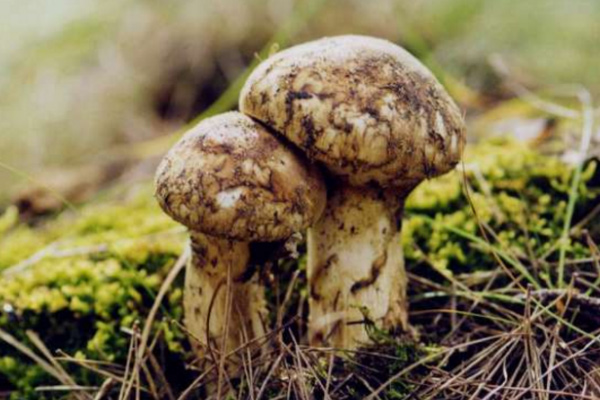
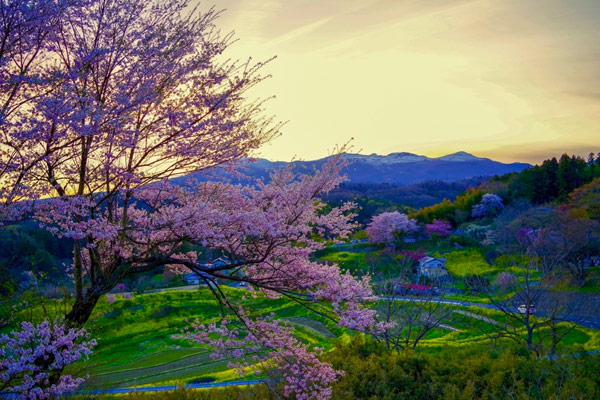
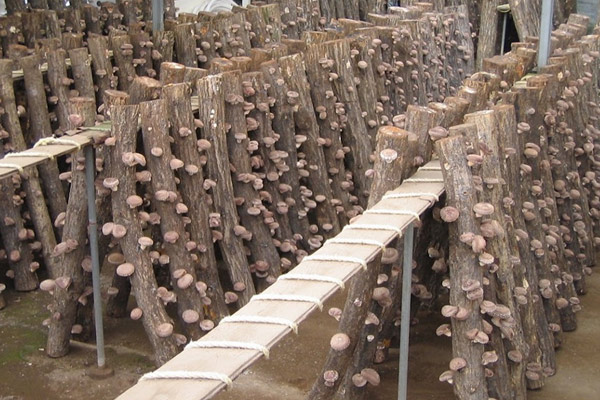
Modern Japanese Mushroom Cultivation
Contemporary but proven fungi farming methodsThe mushroom cultivation industry in Japan has, like most industries around the world, experienced widespread consolidation. The average farm grows more mushrooms and at more efficient economies of scale. The consolidation continues rapidly, largely because smaller farmers don’t have successors willing to take on the family business and the modest living it provides. The Japanese mushroom cultivation industry is now largely centered around big businesses and specialist equipment manufacturers and engineers.The modern Japanese industry is split mainly between two different fungi farming methods (with a few small exceptions): bottle cultivation systems and bag cultivation systems. If all mushrooms could be effectively grown in bottles, then Japan would be nearly all bottle cultivation at this point; such is the difference in labor cost and production efficiency. Some big mushroom companies have even started growing limited amounts of maitake with bottle systems, though the issue is terrible bio-efficiency and poorer quality than bags. Shiitake remain the only variety that is uniquely unsuitable for bottle cultivation.A shiitake farm producing 360-400 tons of mushroom (using bag cultivation) a year requires roughly between 130 and 160 workers to run the farm, while an enoki farm (using bottle cultivation) producing 1600 tons of enoki a year can run with a staff of less than 50 people. Bags also represent a running cost for single-use growing supplies, whereas bottles are much more expensive per unit but last 10 years (filter caps are a different story). Japanese farms utilize insulation foams, extensive networks of sensors, air humidifiers (often simple, self-made ones), and climate control A/C systems to maintain the ideal indoor growing conditions for year-round production. Specialized autoclave systems and clean rooms for inoculation help keep contamination rates low, and Japanese farms main tain consistent yields.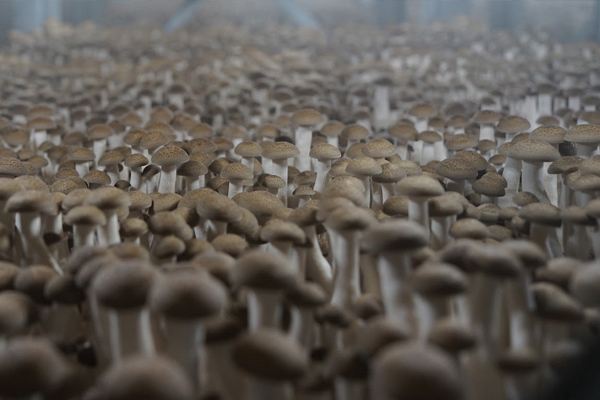
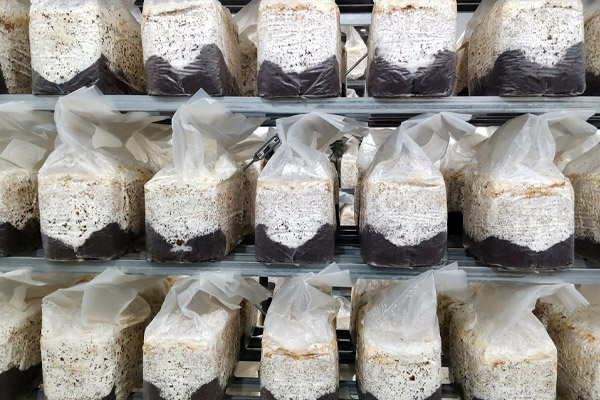
- Although there is an abundance of information on machinery, plant layout best practices, and various growing techniques for the same variety of mushrooms, Japanese mushroom farming is surprisingly uncomplicated. The details of the strain used and whether it is intended for the fresh or dried market can affect the growing process, but overall, it is a straightforward process. Visit a Japanese mushroom farm; the workflow and different job responsibilities are easy to grasp, straightforward, and very logical.Let SALAI demystify the Japanese mushroom cultivation system for you and walk you through applying 70 years of technological and engineering developments to your exotic mushroom project, wherever in the world you are. Get in touch for more on our products and services.
Comparing Cultures in Fungi: Japanese vs. Western Mushroom Cultivation
How do Japanese mushroom farming cultivation practices differ from Western mushroom farms?Japan and Western countries both grow mushrooms. The similarities stop there.Japan and the West have totally diverged nearly from the start. This can be seen in how the industries are categorized: in America and the Netherlands, for instance, mushroom farming is classified as an agricultural industry, regulated and reported on by the Department of Agriculture. In Japan, mushroom farming is classified as a forestry industry under the Forestry Bureau (except for button mushrooms).The origin of the governmental classifications is simple.- Button mushrooms are grown on composted straw and manure. These substrates are agricultural waste products.
- Exotic mushrooms in Japan are all wood-decaying fungi, even if shimeji, eryngii, and enoki are now mostly grown on ground corn cob.
- The first commercially cultivated mushrooms were shiitake, grown on inoculated logs in forested areas, then dried and sold to city markets.
In Europe, button mushroom cultivation began with farmers taking pockets of dense mycelium from fields, where straw and manure were common fertilizers, and moving it to beds of similar substrate. The Parisian catacombs, basements, and caves were among some of the early European mushroom farming spots.The development of the mushroom industry in Europe and the U.S. (where flower farmers picked it up as a way to earn extra income) was entirely focused on the one mushroom variety. Indeed, even the commercial strains used for the vast majority of spawn in the industry today are extremely similar to one another.On the other hand, Japan traditionally used numerous different mushrooms in cooking, not just the mycorrhizal fungi like porcini, chanterelles and truffles popular in Europe. The mushroom cultivation industry in Japan was also uniquely picked up and developed by one region, Nagano Prefecture, as a way of supplementing farmers’ incomes in the snowy northern end of the prefecture - something that turned Nagano, and small cities like Nakano, into the Kennett Square of Japan.Europe and America basically maintained the basic foundations of the approach used by farmers in the 1700s by colonizing large beds of composted substrate and harvesting from that. This makes the Agaricus industry full of big, heavy-duty machinery.
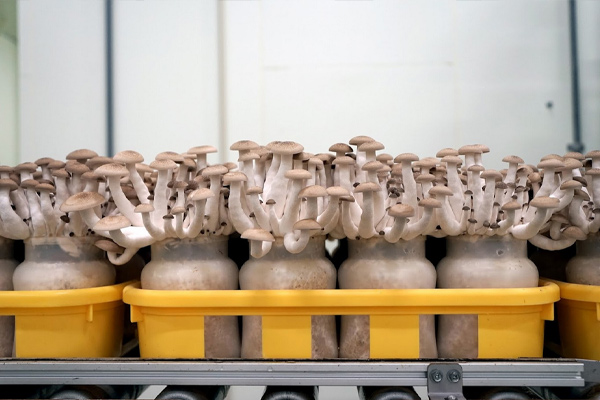
- On the other hand, Japan moved from inoculating logs to developing small, easy-to-handle containers for substrate. Rather than enormous beds 40 meters long and over a meter wide, Japan shrunk each mushroom down to the smallest possible unit. Much of this concerns the individual biological requirements of the exotic mushrooms in Japan compared to button mushrooms. However, the system also reflects how Japan is a country without a lot of space and how the industry was developed to be feasible on small and mid-sized farms. Japan spent the 20th Century refining bottle cultivation and then, starting in the 1980s, developing bag cultivation systems for shiitake and maitake in particular.In the Japanese system of mushroom growing, there is a focus on meticulous control and small units. This differs from the Western system, which is influenced by the unique characteristics of Agaricus bisporus- a fungus that does not grow on wood and is highly resistant to external contaminants. In the Western system, controls are less precise and the individual growing units are larger-sized beds. Because Japan grows six major varieties of mushroom, there is a great depth of expertise in the industry that enables highly consistent, proven, and inexpensive production within two different systems - the bag and bottle - which are both still diametrically opposite of the systems most familiar to Western button mushroom farmers.
Diverse Delights: Mushroom Consumption in Japan
What sets the mushrooms of Japan apart from the restLet’s start with some fun facts:
- Six mushroom varieties account for approximately 98% of Japan's 460,000 metric tons of mushrooms annually.
- The average Japanese person consumes around 16 grams of mushrooms daily, compared to around 3.7 grams in the U.S. and between 5 and 10 grams in the EU.
- According to some accounts, the Chinese per capita consumption is even higher than Japan. Within Japan, household consumption of mushrooms varies from Okinawa’s paltry 7.6kg to Nagano Prefecture’s 17.9 kg, with a nationwide average of 12.8kg.
Mushrooms have long been a staple in Japanese cuisine, celebrated for their unique flavors, versatility, and numerous health benefits. Japan's relationship with mushrooms is marked by a harmonious blend of tradition and innovation. From centuries-old culinary practices to cutting-edge cultivation techniques, the Japanese have developed a deep appreciation for mushrooms and fungi farming.The six most consumed mushrooms in Japan, in order of popularity, are:- Enoki
- Shimeji (beech mushrooms)
- Shiitake
- Maitake,
- Eryngii (king oyster)
- Nameko
Following concerns with heavy metal contamination and quality issues in imported Chinese wood ear mushrooms, domestic production of wood ear mushrooms is exploding in Japan, growing by 3000% in the past decade. Wood ear mushrooms likely account for the largest category of mushrooms in the “other” category, followed by regular oyster mushrooms and hanabiratake (Sparrasis crispa). Button mushroom varieties are not tabulated together with exotic mushroom varieties, but the consumption of button mushrooms has varied between 7 and 9 thousand metric tons in recent years.The consumption of mushrooms in Japan has been increasing in recent years. However, the shrinking population has offset most of these gains for industry, leading to extremely stable net production over the past decade. The distribution of mushroom cultivation, production and consumption within Japan says a lot about the history of the industry in the country.Mushroom Species Of Japan
 EnokiShimejiShiitakeMaitakeEryngiiNamekoWood Ear
EnokiShimejiShiitakeMaitakeEryngiiNamekoWood Ear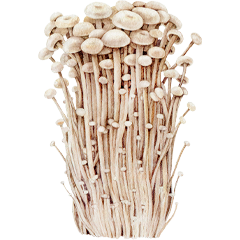 Calories 34
Calories 34
Fiber 4.5g
Potassium 270mg
Iron 1mg
Protein 2.8g
Good Source of:
Vitamin B, biotin, and bioactive dietary fiber (beta-glucans)
Tall, thin mushrooms that grow in tightly packed clusters. Caps are small and round. The entire mushroom up to just above the base of the mycelium is edible. Enoki are usually pale white, but light brown varieties also exist. Enoki are sweet and have a crisp texture even when cooked.
Harvest Season:
Year-round on mushroom farms, wild enoki are a winter mushroom and prefer temperatures just above freezing.
Optimal Cultivation Methods: Bottle cultivation systems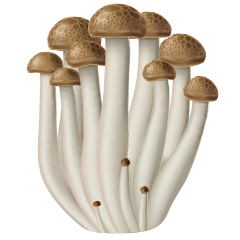 Calories 22
Calories 22
Fiber 4.2g
Potassium 280mg
Protein 2.7g
Good Source of:
Vitamin B, biotin and bioactive dietary fiber (beta-glucans)
Grow in clusters with wide variation in the sizes of individual mushrooms. Caps are round and large. The cap of the mushroom varies from light brown to blackish in coloration, while the stems are pale white. The entire mushroom up to just above the base of the mycelium is edible. Retains bulk after cooking, and texture is similar to button mushrooms.
Harvest Season:
Year-round on mushroom farms, wild shimeji have a very different shape and don’t form large clusters but are harvested in the autumn months.
Optimal Cultivation Methods: Bottle cultivation systems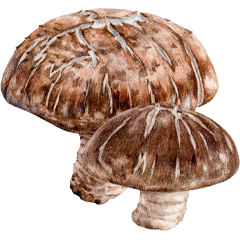 Calories 22
Calories 22
Fiber 4.4g
Potassium 200mg
Protein 2.5g
Good Source of:
Vitamin B, choline, and bioactive dietary fiber (beta-glucans)
Thick cap with light brown to ebony coloration. Usually, just the cap is consumed. Shiitake have a rich and very distinctive aroma and umami flavor.
Harvest Season:
Year-round on mushroom farms, wild shiitake is found between September and December.
Optimal Cultivation Methods: Bag cultivation systems Calories 27
Calories 27
Fiber 4.3g
Potassium 110mg
Protein 1.6g
Good Source of:
Vitamin B, Vitamin D, biotin and bioactive dietary fiber (beta-glucans)
Maitake are bracket fungi. They grow in large, single clusters, similar in shape and coloration to a pine cone. Color varies between specially patented white varieties to light brown and dark, almost black, brown varieties. The entire mushroom up to just above the base of the mycelium is edible. Cooks down considerably. Very rich, meaty smell and distinctive umami taste.
Harvest Season:
Year-round on mushroom farms, wild maitake are harvested mainly in October and November.
Optimal Cultivation Methods: bottle cultivation systems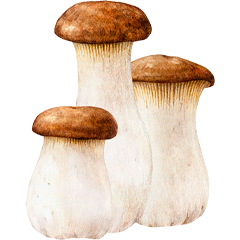 Calories 32
Calories 32
Fiber 4.8g
Potassium 260mg
Protein 3.2g
Good Source of:
Vitamin B, ergothioneine, and bioactive dietary fiber (beta-glucans)
Eryngii have significant variability in size depending on growing methods. The stems are a creamy white to beige color, while the caps are brown to blackish. The entire mushroom up to just above the base of the mycelium is edible. Mild, meaty flavor and firm, meat-like texture after cooking.
Harvest Season:
Year-round on mushroom farms, wild eryngii are found in the autumn months.
Optimal Cultivation Methods: Only bottle cultivation systems exist in Japan and the rest of Asia. In Europe and the U.S., almost solely through bag cultivation systems.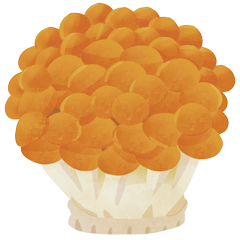 Calories 22
Calories 22
Fiber 2.8g
Potassium 210mg
Protein 1.6g
Good Source of:
Vitamin B (especially folate) and bioactive dietary fiber (beta-glucans)
Golden brown coloration. Comparatively large caps and narrow beige-colored stems. Stems are also edible, but larger stems can be tough and chewy. Light, nutty flavor, and mild aroma. Nameko have a similar texture to okra, which can be a bit slimy but are great for thickening sauces and soups.
Harvest Season:
Year-round on mushroom farms, wild nameko are found in autumn.
Optimal Cultivation Methods: In Japan, nameko are the only major mushroom variety grown with both bag and bottle cultivation systems depending on the farm. Largely unknown outside of Japan.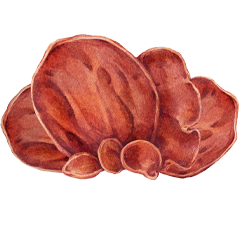 Calories 14
Calories 14
Fiber 5.2g
Potassium 37mg
Magnesium 27g
Protein 0.6g
Good Source of:
Vitamin D and has the highest concentrations of bioactive dietary fiber (beta-glucans) of any common commercial variety and phenolic antioxidants not found in other mushrooms. A rich source of iron, calcium, iron and other minerals.
Dark brown, usually sold dried due to short shelf life. Before harvest, wood ear mushrooms have an uncanny resemblance to human ears, with rounded oyster shell shapes and numerous folds. A small form of bracket fungi, wood ears do not have stems, and the entire mushroom is edible. Virtually no flavor or smell, wood ears are used for their firm, crunchy texture, which is unaffected even by extensive cooking/boiling, and to add bulk to dishes. Prominent in traditional Chinese medicine.
Harvest Season:
Year-round on mushroom farms, wild wood ear mushrooms are a rare summer mushroom, growing well in temperatures between 27 and 31 degrees Celsius. Many Japanese farms increasingly turn to wood ear mushroom production in summer months to reduce air conditioning costs.
Optimal Cultivation Methods: Bag cultivation
